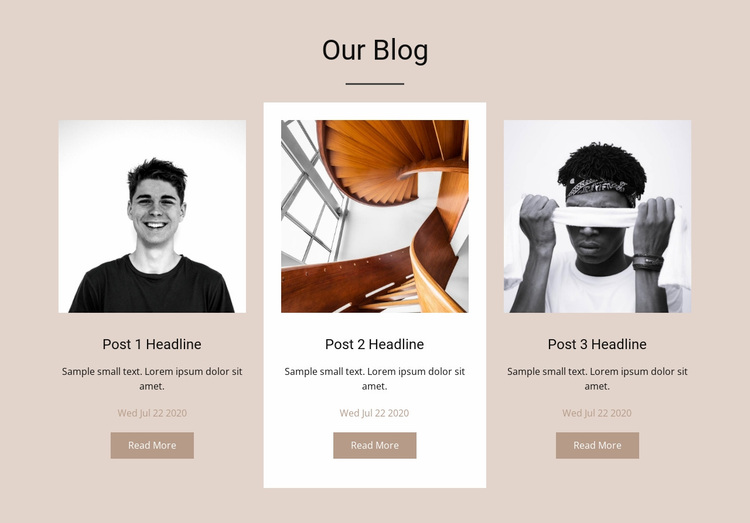Easy-to-Navigate Website Design Services That Improve Navigation and Interaction
Easy-to-Navigate Website Design Services That Improve Navigation and Interaction
Blog Article
Leading Tips for Developing an Impactful Internet Site Layout That Converts
To attain this, one have to consider a variety of aspects, consisting of recognizing the target audience, focusing on individual experience, and enhancing for mobile systems. The critical use of engaging call-to-actions and a well-defined aesthetic pecking order plays a critical role in leading users via their journey.

Understand Your Target Market
Recognizing your target audience is fundamental to reliable web site layout, as it prepares for producing an appealing customer experience. Identifying who your individuals are, including their demographics, preferences, and behaviors, makes it possible for developers to customize the website's material, format, and performance to meet certain demands.
Carrying out detailed market research study is vital in this procedure. Studies, meetings, and analytics can provide valuable understandings right into individual assumptions and discomfort factors. By assembling this data, developers can develop user identities that stand for various sections of the target market, making certain that style decisions are educated and pertinent.
Moreover, recognizing the target audience aids in picking appropriate layout components such as color pattern, typography, and imagery that reverberate with users. An internet site that talks directly to its target market promotes a sense of link and depend on, encouraging longer check outs and higher conversion prices.
Eventually, a user-centered approach to site style not only boosts individual complete satisfaction yet additionally sustains service objectives by driving engagement and loyalty. By prioritizing the needs and preferences of the target market, a website can effectively offer its purpose and accomplish wanted results.
Prioritize User Experience
To boost the overall effectiveness of a site, focusing on customer experience (UX) is necessary (Website Design). A well-designed UX ensures that site visitors can navigate the site effortlessly, locate details promptly, and engage with material meaningfully. This results in enhanced user contentment and higher conversion prices
Begin by applying intuitive navigation. Menus needs to be logically structured, allowing individuals to locate essential locations of the site with minimal effort. Uniformity in design components, such as color design and font styles, promotes familiarity, which is essential for keeping customer engagement.
Furthermore, think about the filling rate of your web site. A hold-up of simply a few secs can result in significant drop-offs, as customers are much less most likely to wait on a slow-loading web page. Simplifying pictures and maximizing code can improve performance and keep visitors.
Additionally, clearness in material discussion is vital. Use succinct, interesting language and break up text with visuals to enhance readability. By focusing on customer experience, you not just create a much more satisfying atmosphere for site visitors however also strengthen your brand's credibility. Ultimately, a focus on UX is an investment in the lasting success of your website.
Maximize for Mobile Instruments
Maximizing for smart phones is essential in today's electronic landscape, where a boosting variety of individuals gain access to internet Clicking Here sites via smartphones and tablet computers. A mobile-friendly design not only enhances individual experience yet also plays a significant role in boosting internet search engine positions. To attain this, it is important to adopt a receptive style that immediately changes to different screen dimensions and alignments.

Loading rate is another vital variable; mobile users are generally much less person and anticipate quick access to information. By prioritizing mobile optimization, you make certain that your website continues to be competitive and properly engages a broader audience.
Use Engaging Call-to-Actions
A website's effectiveness typically pivots on its ability to direct site visitors towards preferred activities, making engaging call-to-actions (CTAs) necessary components of design. CTAs act as the pivotal factors that direct individuals to involve with the website, whether that means buying, authorizing up for a newsletter, or downloading a resource.
To develop effective CTAs, clarity is paramount. Usage succinct language that plainly connects the action you want the customer to take.
Moreover, the design of CTAs ought to stand apart without being noticeable. Employ contrasting colors and clear font styles to guarantee they catch interest. Additionally, take into consideration making use of directional cues, such as arrowheads or great post to read pictures, to direct individuals towards these buttons. By focusing on these elements, companies can substantially boost user engagement, driving conversions and ultimately achieving their website's objectives.
Concentrate On Visual Pecking Order
Reliable website design relies greatly on a well-structured aesthetic hierarchy that overviews customers through material perfectly. By arranging components in a manner that focuses on information, designers can improve individual experience and promote decision-making. This involves using dimension, color, contrast, and spacing tactically to accentuate the most crucial components of a webpage.
The use of bigger typefaces for headings and subheadings develops a clear difference between different sections, permitting customers to scan content easily. Furthermore, using contrasting shades for switches and calls-to-action can record customer interest and encourage communication. Whitespace is another necessary part; it protects against clutter and makes it possible for individuals to concentrate on vital messages without distractions.
Photos and graphics must match the text while also sticking to the established hierarchy, strengthening the total message (Website Design). Uniformity in style aspects, such as color pattern and typography, additional strengthens the aesthetic hierarchy, making navigation intuitive

Final Thought
In conclusion, efficient site layout necessitates a thorough understanding of the target audience, prioritization of user experience, and mobile optimization. Ultimately, a well-executed site style serves as a crucial component in driving user activities and achieving service purposes.
Report this page